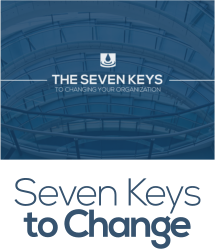


With Daniel’s help and leadership we put together a strategic executive leadership team that bought into the idea of teamwork, putting the agency ahead of their individual areas, and focused on changing the organization in very meaningful ways.
Daniel worked with the agency – an agency of seven or eight thousand people – to prepare them for major initiatives in change management. With Daniel’s leadership, we really thought through how to look at organizational development, how people change, and how they need real help to do that. Without that, our efforts wouldn’t have worked. With the change management leadership, the human dimension, the team building, and the ability to pull together a strategy for implementing change that worked – we had an amazing opportunity that became an amazing success.
When I first became Dean of the College of Veterinary Medicine at Michigan State University, I had Daniel work with me to go in and actually talk to the entire college, individually and in groups, to share with him what they hoped I, as the new dean, would do.
There are five stages of taking charge and leading a new organization. The initial phase is to start out and solve problems that are waiting for you to be solved. Then there’s an immersion phase, and then there’s a phase of high activity once you’ve done the immersion phase, and then new programs, new activities, followed by a period of refinement.
Daniel helped compress the immersion stage for me, giving me a much better understanding of the feelings within the college, their expectations, their hopes, their aspirations, their concerns. I don’t think they would have shared all that with me as an external person coming in, an unknown.
Of course, Daniel was an external person that they didn’t know. But this really speaks to his talent, his ability to go in and listen, to build almost immediate trust and credibility, and have people open up to him. Through his excellence in asking questions, probing, and developing trust, he was able to find out things about the college that I never would have found out, and that were critical for planning what I should do.
He then helped design and plan a whole strategy of visioning so we had the full college involved, all actively engaged. It was the first time it’s ever been done in that college, and it was enormously successful. We were able to work with what the faculty and staff hoped would come out of my leadership role, rather than me coming in and dictating to them. It was enormously successful – they still talk about it. It set the pathway for the next ten years of activities in that college.
Here at Ohio State University, I’ve had Daniel do a whole organizational development culture analysis of the veterinary medical center. It’s a very busy, difficult, and stressful workplace, with lots of faculty and several hundred staff. Daniel has that ability to pull out of people their thinking and their trust, and develop a complete analysis of the culture, what people’s desires and hopes and concerns are.
Then he turned that into an intervention strategy, with work teams, follow-up and implementation. We’re working through changing the culture of this hospital, making it a better workplace, a better balance of work/family life – a more caring, nurturing, and respectful environment to work in.
Daniel is able to ask the difficult questions of people and have difficult conversations. He can take all the experience he has and bring it to bear to talk about how a person can be successful, what they need to do. Then he can set up an individualized strategy for continuous learning and improvement that really makes these people more successful.
He builds trust and can tell people the tough things they need to hear, but he’s also able to be encouraging and talk about their strengths and areas where they really do well. With Daniel, you really feel that here’s somebody who sincerely wants you to succeed, and he will work with you to make sure that that happens. And he has the skills and the experience to make you successful.
A lot of people will put together designs for leading and managing change, but the implementation part’s forgotten, never gets done.
Daniel doesn’t just talk about leading and managing change, or successful conflict resolution, or developing leaders. In all of my work with Daniel, I can always look at outcomes and say we’ve actually achieved these. I know when I involve him, the outcomes and results I’m looking for, that we agree on, will occur.
It’s just not a process – it’s a process with results. It’s become an expectation for me. He’s going to work through it until we make it successful.
– Lonnie King, Dean, College of Veterinary Medicine, the Ohio State University; former center director, Centers for Disease Control



